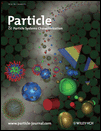Microencapsulation and the controlled release of bioactive agents have long been investigated and exploited to both improve the fundamental understanding of cell functionality and to develop efficient delivery vehicles for drugs, nutrients, and cosmetics. Conventional approaches to the synthesis of particles and capsules for practical applications have achieved only limited control over particle size, shape, functionality, and encapsulation efficiency. To overcome such limitations, a variety of approaches have been developed. Recent advances in microfluidics and other techniques have inspired the design of new microcarriers that efficiently encapsulate bioactive agents to enable the on-demand release or functionalization of encapsulants. Here, the current state of the art in the area of elaborate design strategies for microcarriers that enable efficient encapsulation and controlled release for biological applications is described. This is discussed in three sections, which are categorized by microcarrier type: particle-type carriers, capsule-type carriers, and foldable microcarriers. In each section, new routes to fabricating microcarriers are discussed together with their functionalities; techniques based on droplet microfluidics, lithography, micromolding, and imprinting are covered. In addition, the synthetic routes and the microcarriers are evaluated by comparison with alternative routes. Finally, future perspectives for these new strategies are outlined briefly.


